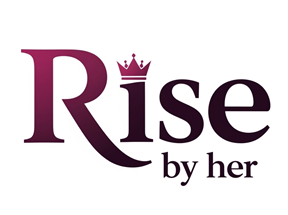In today’s fast-evolving world, empowering women in leadership is more than a social responsibility, it’s a strategic imperative for global progress. Despite significant strides in gender equality, many women still face barriers when climbing the corporate ladder, entering boardrooms, or leading industries. From systemic bias to lack of mentorship and support, the challenges are real, but so are the solutions.
Empowered women lead with empathy, innovation, and resilience. They bring fresh perspectives that drive organizational success and community transformation. Yet, true empowerment goes beyond just promoting women to leadership roles. It requires meaningful actions, inclusive policies, and a cultural shift that recognizes and supports women at every stage of their leadership journey.
In this post, we’ll explore seven powerful and practical ways to empower women in leadership, not just in theory, but through actionable steps supported by research, experience, and success stories. Whether you’re an employer, educator, policymaker, or aspiring leader yourself, these strategies will help you foster a brighter, more inclusive future. Now is the time to elevate women’s voices, invest in their growth, and create environments where they don’t just survive; they thrive. Ready to take the first step? Let’s dive in and discover how you can help shape a future led by strong, capable, and empowered women.
Establish Mentorship and Sponsorship Programs for Women Leaders
Mentorship programs for women leaders and sponsorship opportunities for female executives are essential tools in closing the leadership gender gap. While mentorship focuses on providing advice, skills development, and emotional support, sponsorship takes things a step further. Sponsors actively advocate for women, recommending them for promotions, leadership roles, and high-visibility projects that elevate their careers.
For women navigating male-dominated industries or executive paths, access to mentors and sponsors can be a game-changer. These relationships not only build confidence but also provide strategic connections and insider knowledge that are often unavailable through formal training alone.
Companies that implement structured mentorship and sponsorship programs see measurable improvements in diversity at senior levels. According to a study published by the Harvard Business Review, organizations with active sponsorship programs report significantly higher numbers of women in leadership positions compared to those without. Additionally, women with sponsors are 27% more likely to seek promotions and stretch assignments.
To build effective programs:
- Match mentors and sponsors intentionally based on goals, experience, and career aspirations.
- Provide training for mentors and sponsors to avoid unconscious bias.
- Set measurable goals and track progress to ensure accountability and impact.
By investing in these initiatives, companies and institutions not only empower individual women, but they also cultivate a more inclusive, innovative, and successful leadership culture.
Promote Leadership Development and Training for Women
Investing in leadership development programs for women is one of the most effective strategies to accelerate gender diversity in leadership roles. Tailored women in leadership training courses empower aspiring and current female leaders with the critical skills, confidence, and strategic mindset needed to thrive in high-stakes environments.
Unlike generic leadership training, programs designed specifically for women address the unique barriers they often face, such as imposter syndrome, limited access to high-level networks, and unconscious bias. These courses typically focus on areas like executive communication, negotiation, strategic decision-making, and building a personal leadership brand.
According to The Washington Post, women benefit most from programs that blend skills development with peer support and mentorship. When organizations provide these targeted learning experiences, they send a clear message: women belong in leadership, and their growth matters.
Global initiatives such as Chief Executive Women offer scholarships, workshops, and training to help women climb the corporate ladder and break through the glass ceiling. Their programs serve as powerful examples of how structured, high-impact development pathways can transform potential into leadership excellence.
To maximize impact:
- Ensure accessibility to women across all levels of an organization.
- Align program content with real-world leadership challenges.
- Offer follow-up coaching or peer circles to reinforce learning.
When companies invest in developing female leaders, they don’t just support individual growth, they future-proof their organizations with more inclusive, forward-thinking leadership.
Encourage Women to Pursue Executive and Board Positions
Improving the number of women in executive leadership roles and increasing female representation on corporate boards isn’t just a gender equity goal: it’s a business necessity. Organizations that prioritize diverse leadership benefit from enhanced innovation, better decision-making, and stronger financial performance. Despite these benefits, women remain underrepresented in senior leadership worldwide. One key reason is the lack of encouragement, mentorship, and clear pathways for women to pursue these top-tier roles. Active support (from peers, mentors, and employers) can significantly influence a woman’s decision to aim for executive and board-level positions.

Ways to Encourage and Support Women Toward Executive Roles:
- Create visible pathways: Provide clear, structured promotion routes that highlight how women can move into C-suite or board positions.
- Offer board readiness programs: These programs help women develop the specific governance knowledge and confidence needed to serve on boards.
- Promote high-potential women internally: Identify and invest in female talent early to build a robust leadership pipeline.
- Champion women publicly: Recognize and promote female leaders in company communications, press, and conferences.
Countries like Japan have begun taking notable steps in this direction. According to Reuters, initiatives there focus on increasing female representation in management through targeted networking and training programs, serving as a model for how institutional support can drive change. Encouraging women to aim higher isn’t about preference, it’s about tapping into the full range of talent available to lead effectively in today’s global economy.
Foster Inclusive Workplace Cultures
Creating a workplace rooted in inclusive workplace practices is essential to advancing gender diversity in leadership. When organizations embrace diversity and foster a culture of belonging, women are more likely to step into leadership roles, stay engaged, and contribute at their highest level.
An inclusive workplace doesn’t just tolerate differences, it celebrates them. It ensures all employees, regardless of gender, feel respected, heard, and valued. For women in leadership, this type of environment can be the difference between thriving and merely surviving.
Key Inclusive Practices That Empower Women Leaders:
- Implement gender equity policies: From equal pay to family leave, policies must actively support women’s advancement.
- Establish zero-tolerance for discrimination or bias: Make inclusivity a part of company values and hold everyone accountable.
- Encourage open dialogue: Safe spaces and regular feedback loops help surface diverse perspectives and ideas.
- Support flexible work environments: Flexibility allows women to balance leadership and life responsibilities without penalty.
According to psychologist Amy Novotney’s article, “Women Leaders Make Work Better,” research shows that women in leadership roles are associated with increased productivity, improved fairness, and more collaborative team dynamics. Inclusive cultures amplify these benefits by enabling women to lead authentically and effectively. Fostering inclusivity isn’t a checkbox, it’s a long-term commitment to building organizations where everyone can lead, succeed, and shape the future.
Address and Mitigate Gender Bias in the Workplace
One of the most persistent barriers to women’s advancement is gender bias in leadership. Whether conscious or unconscious, bias skews decision-making, limits opportunities, and reinforces outdated norms. To truly empower women and create fair advancement pathways, organizations must commit to overcoming workplace discrimination against women through deliberate action. Bias often manifests subtly, in hiring decisions, performance evaluations, or who gets invited to key meetings. Left unchecked, it undermines the confidence and careers of talented women.

Effective Strategies to Combat Gender Bias:
- Implement bias training: Educate leadership and staff on how unconscious bias operates and how to interrupt it in real time.
- Standardize evaluations and promotions: Use structured, criteria-based reviews to minimize subjective decision-making.
- Track diversity metrics: Regularly measure gender representation in leadership and set goals for improvement.
- Encourage allyship: Train team members to recognize bias and speak up in support of equity.
According to multiple studies, including those cited by Harvard Business Review, organizations that make intentional efforts to promote women into senior roles see better outcomes. This includes greater diversity of thought, stronger team performance, and more innovation. Eliminating bias is an ongoing culture shift. By acknowledging and addressing these challenges, companies can remove invisible barriers and create a leadership pipeline where women are judged by their potential, not their gender.
Support Work-Life Balance Initiatives
Balancing career ambitions with personal responsibilities is a common challenge for women in leadership. That’s why promoting work-life balance strategies for women leaders is essential to retaining and empowering female talent. Organizations that implement flexible work arrangements for female executives show they value not just productivity, but well-being and long-term engagement.
When companies support work-life balance, they remove one of the most cited barriers to women’s advancement: burnout. Flexibility creates space for women to lead effectively while also caring for themselves and their families, without being penalized or overlooked.
Best Practices for Supporting Work-Life Balance:
- Offer flexible scheduling: Allow leaders to manage their time in a way that supports both professional and personal priorities.
- Provide generous parental leave: Ensure both maternity and paternity leave policies are equitable and supportive of career continuity.
- Normalize boundary-setting: Encourage leaders to unplug outside of work hours to reduce stress and increase focus during work time.
- Create a culture of empathy: Train managers to lead with understanding and to model healthy work-life integration themselves.
Advocates for women in business emphasize that balance and joy in one’s career are crucial for sustainability. When women feel they don’t have to choose between leadership and life, more are likely to step up, and stay. By supporting flexible, thoughtful policies, companies create not only more inclusive environments but also more resilient, loyal leadership teams.
Highlight and Celebrate Female Role Models
Shining a spotlight on female leadership role models is one of the most powerful ways to inspire the next generation of women leaders. When women see others who look like them thriving in top positions, it breaks down mental barriers and makes leadership feel attainable. Showcasing inspiring women in executive positions offers not only motivation but also a blueprint for success.
Representation matters, not just at the boardroom table, but also in the stories organizations choose to tell. Elevating diverse voices, experiences, and leadership styles reinforces that there’s no one path to success.
How to Effectively Celebrate Female Role Models:
- Feature stories across platforms: Use websites, newsletters, social media, and events to highlight women’s achievements.
- Host leadership spotlights or panels: Give successful women a platform to share insights, challenges, and lessons learned.
- Create mentorship circles: Pair aspiring leaders with seasoned role models to foster guidance and personal connection.
- Recognize milestones publicly: Celebrate promotions, awards, and major contributions visibly within the organization.
According to research published on ResearchGate, role models positively influence behavior and aspirations, especially among emerging women leaders. A Conductor study further confirms that storytelling featuring women in leadership roles improves audience engagement and builds trust.
Ultimately, when organizations celebrate successful women, they do more than honor individuals, they cultivate a culture where every woman can envision herself leading.
Empowering women in leadership isn’t just about ticking diversity boxes, it’s about building stronger, more innovative, and inclusive organizations. From mentorship programs to inclusive cultures and visible role models, each step forward creates lasting impact. Let’s commit to championing these meaningful strategies because when women rise, we all rise.
Our Mission: Driving Change for Women Leaders
At the heart of our efforts is a clear mission: to empower women to lead with confidence, vision, and impact. We aim to break down barriers, provide actionable strategies, and foster inclusive environments where women don’t just participate—they thrive. By championing mentorship, leadership development, equitable opportunities, and representation, we strive to create a world where women’s voices are heard, respected, and celebrated at every level of leadership.
Our mission isn’t just about equality—it’s about unlocking the full potential of organizations, communities, and society as a whole. When women lead, innovation flourishes, cultures transform, and the future becomes brighter for everyone.
Ready to make a difference? Share this article, start the conversation in your workplace, or nominate a woman leader you admire in the comments below.


